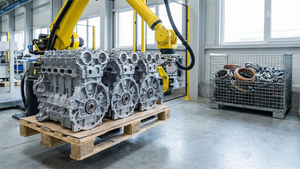Technology Remains Highest-Scoring Category
Climbing into a car with no driver—and expecting that car to take the rider to a predetermined destination—is something about which most consumers are skeptical. However, once someone rides in a robotaxi, they like it. Consumers’ level of satisfaction with the experience is 8.53 (on a 10-point scale), according to the J.D. Power 2024 U.S. Robotaxi Experience Study,SM released today. The leading contributor to the positive experience is vehicle technology.
Consumer confidence when riding in a fully automated, self-driving vehicle is 56 percentage points higher among those who have ridden in a robotaxi (76%) than the general population who have not had the experience (20%). Exposure to the technology, as seen by non-riders in cities with robotaxi deployments, also improves consumer confidence (34%). These are indications that experience continues to be a main driver of trust and acceptance.
As an industry leader in measuring consumer readiness for automated vehicle transportation, J.D. Power gathers valuable, unfiltered feedback from robotaxi riders and those who have interacted with robotaxis (non-riders) in their community. This year, the study expands to five markets—Dallas, Las Vegas, Los Angeles, Phoenix and San Francisco. It also includes brand-level insights for Cruise, May Mobility, Motional, Waymo, and Zoox and includes feedback from a national sample to measure consumer opinions of robotaxi brand imagery and preferences.
“The robotaxi segment is still anyone’s game, given that most people are not familiar with robotaxi brands and haven’t formed a clear associative imagery,” said Kathleen Rizk, senior director of user experience benchmarking and technology at J.D. Power. “Industry leaders like Cruise and Waymo, along with lesser-known companies such as Zoox, May Mobility and Motional, need to look beyond their deployment markets and find ways to educate and build trust with all consumers.”
When asked to describe their ideal robotaxi service, consumers consistently selected image attributes of safe, reliable and trusted. The consistency with which these metrics are prioritized among riders and non-riders (78% selected safe; 71% selected reliable; and 66% selected trusted), as well as the general population, indicates the foundational expectations of consumers. However, upon examination of brand association with these key metrics, there are notable differences between riders and non-riders in the five markets, as well as compared with the general population. As a result, the reputation of robotaxi brands is somewhat insulated to the testing markets, making it paramount to expand market exposure and brand awareness.
Following are some key findings of the study:
- Consumers seek safety features: When asked what the ideal robotaxi service should offer, the most important items are emergency button to connect with local emergency services; shares location with authorities; ability to select a vehicle that has the safety features they want; and the ability to set the route beforehand.
- Unmet needs drives novelty usage: Currently, consumers are using robotaxis as a novelty, as they do not fulfill the riders’ needs pertaining to the service area coverage and cost of the services. Until robotaxi providers can fulfill these and other needs, the service will remain a novelty transportation method.
- Obeying the law: Attributes in the technology category that score highest among robotaxi riders are vehicle obeys traffic laws (8.36 on a 10-point scale) and the vehicle's performance maneuvering in normal traffic conditions (8.30).
- Robotaxi vs. rideshare: When given a series of scenarios assuming the cost for either service would be the same, 77% of riders say they would prefer to utilize a robotaxi service without a human driver when needing to have a private conversation in the vehicle, while a ride-hailing service (e.g., Lyft, Uber) is preferred when traveling in an area they don’t know well.
The U.S. Robotaxi Experience Study, now in its second year, is based on responses from 3,773 respondents comprised of 773 consumers living in cities where robotaxi services are available (Dallas, Las Vegas, Los Angeles, Phoenix and San Francisco) and a national sample of 3,000 consumers to better understand their perceptions and knowledge of the technology. To qualify in the targeted cities, respondents had to ride in a robotaxi and/or observe a robotaxi operating in their community. These two groups of participants are classified as riders and non-riders, respectively.
The study is based on five categories (in alphabetical order): comfort and convenience; initiating the ride; riding in the vehicle; service availability and cost; and vehicle technology. The study was fielded in August 2024.
To learn more about the U.S. Robotaxi Experience Study, visit https://www.jdpower.com/business/us-robotaxi-experience-study.
See the online press release at http://www.jdpower.com/pr-id/2024117.
About J.D. Power
J.D. Power is a global leader in automotive data and analytics, and provides industry intelligence, consumer insights and advisory solutions to the automotive industry and selected non-automotive industries. J.D. Power leverages its extensive proprietary datasets and software capabilities combined with advanced analytics and artificial intelligence tools to help its clients optimize business performance.
J.D. Power was founded in 1968 and has offices in North America, Europe and Asia Pacific. To learn more about the company's business offerings, visit JDPower.com/business. The J.D. Power auto-shopping tool can be found at JDPower.com.
About J.D. Power and Advertising/Promotional Rules www.jdpower.com/business/about-us/press-release-info
View source version on businesswire.com: https://www.businesswire.com/news/home/20241008488801/en/
Contacts
Media Relations Contacts
Geno Effler, J.D. Power; West Coast; 714-621-6224; media.relations@jdpa.com
Shane Smith; East Coast; 424-903-3665; ssmith@pacificcommunicationsgroup.com







